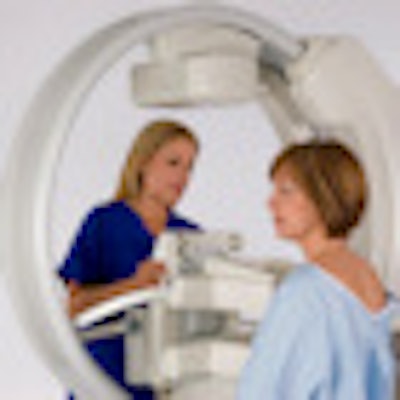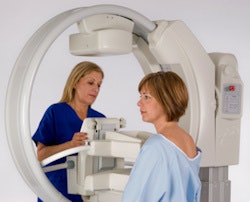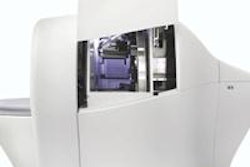
The clock is now ticking for molecular breast imaging (MBI) developer Gamma Medica, which has three months to find additional financing or reorganize itself after a bankruptcy court approved a temporary financing plan last week. The outcome could impact the nascent market for MBI technology.
On October 3, U.S. Bankruptcy Court for the Central District of California (San Fernando Valley Division) approved Gamma Medica's $1.5 million debtor-in-possession (DIP) financing plan as part of the company's Chapter 11 restructuring. The financing is expected to tide the company over until January 2013 as it pursues either additional financing or a buyer for its assets, which include both clinical and preclinical products.
The question is whether Gamma Medica's financial woes affect the adoption of molecular breast imaging, which some women's imaging specialists have hoped could develop into an adjunct breast imaging technology that would help compensate for some of the recognized shortcomings of mammography.
Pioneer MBI developer
Gamma Medica is one of a handful of companies working on MBI technology. The firm's LumaGem system is based on a gamma camera with solid-state digital detectors that detect uptake of technetium-99m in the breast.
But despite receiving clearance from the U.S. Food and Drug Administration (FDA) three years ago for LumaGem, adoption of the technology has been slow. Add a soft market for its preclinical imaging products, and Gamma Medica was prompted to file for bankruptcy protection in August.
 Gamma Medica has sold 20 LumaGem systems since its FDA clearance three years ago. Image courtesy of Gamma Medica.
Gamma Medica has sold 20 LumaGem systems since its FDA clearance three years ago. Image courtesy of Gamma Medica.
"The headline answer is that the company did not have enough money to execute or complete the execution of its go-to-market strategy for the molecular breast imaging product," Gamma Medica CEO Jim Calandra told AuntMinnie.com. "The confluence of those two things put a lot of tension on the balance sheet, and there was not enough capital for those two competing businesses to deal with."
Gamma Medica has two product divisions. Its Clinical division includes the LumaGem system, with both a current procedural terminology code and reimbursement available for the product. The company's Pre-Clinical division features its Triumph imaging system, which combines PET (LabPET), SPECT (X-SPECT), and CT (X-O) into one trimodality device for small animal imaging.
According to Calandra, Gamma Medica has sold 20 LumaGem systems to date, with 12 of those sales coming this year. At that pace, additional investment was needed to continue product development and to upgrade the technology.
In recent months, Gamma Medica was unsuccessful in raising more capital and was unable to find an interested buyer for the LumaGem technology. In addition, Calandra said that the company's investors could not agree on how to structure additional investment in the business, so Gamma Medica was forced to file Chapter 11 bankruptcy.
With the $1.5 million in DIP financing in place, Gamma Medica now has more time to find additional financing and/or capital to remain a viable entity. The company has retained the investment bank CRS Capstone to provide advice on the potential sale or financial restructuring of one or both of the company's divisions.
"We agreed to a time frame to run a sale process to sell the assets," Calandra said. "To the extent that a sale was feasible, we were thinking it would be a four- to six-month process. What we agreed to in the DIP financing was to have something concluded by early January. By our projections, we can go well beyond the early January deadline."
Standalone preclinical business?
As a separate entity, Calandra said the Pre-Clinical division can stand on its own. The company restructured the business over the past 12 to 15 months to ensure that its cost structure matched its revenue-generating capacity.
"We believe we have reached that point, and we are very happy with the financial performance of the Pre-Clinical imaging business," Calandra said. "I am confident on its own that it can sustain itself."
The nature of the Clinical business, however, is quite different, he said, adding that the LumaGem operation is still "very much an early-stage business."
While the company is generally pleased with the 20 LumaGem sales, the "reality is it is not generating near enough revenue to fund itself," Calandra said. "The product development agenda is ambitious. The go-to-market strategy for technology like this can be quite costly."
Gamma Medica's challenge continues to be to generate enough revenue and profits so the Clinical business can be financially self-sufficient.
"We are aware of investors who are interested in making the investment, but the outcome of this Chapter 11 reorganization is a critical element of their willingness to invest additional capital."
Product development
As Gamma Medica works on its financial present and future, the company continues to advance the LumaGem technology. Plans are to unveil two new enhancements at next month's RSNA 2012 meeting in Chicago. One feature is a gamma camera-guided biopsy module, scheduled to come to market as an upgrade in early 2013.
The company is also developing its own software platform for the LumaGem, which would replace the third-party software now operating the system. Gamma Medica plans to unveil the software at RSNA 2012 in a preliminary form, and expects to have the software available in early 2013.
"We are viewing the LumaGem as the future of this company in whatever form emerges from Chapter 11," Calandra said. "We don't want to slow down."
Future prospects
So, beyond sufficient financing, what will it take for Gamma Medica to remain viable? Calandra said the adoption of MBI technology is dependent, in part, on multisite clinical studies that can confirm the technology's efficacy.
A study from researchers at Mayo Clinic in Rochester, MN, whose abstract was published in the April 2011 issue of Journal of Nuclear Medicine (Vol. 52:4, p. 670), found that MBI can detect invasive ductal carcinoma, ductal carcinoma in situ (DCIS), and invasive lobular carcinoma, and can play a beneficial role in evaluating extent of disease and presence of multifocal disease for surgical treatment planning. The LumaGem system achieved sensitivity of 91% and specificity of 93% in the study.
More recently, in the October issue of the Journal of Nuclear Medicine, Italian researchers used LumaGem to show that molecular breast imaging was a "highly sensitive diagnostic tool" in detecting DCIS and had uptake that correlated well with mammography findings. Sensitivity was 94% in the study, which did not give specificity results (JNM, Vol. 53:10, pp. 1528-1533).
"Once we are able to demonstrate that the Mayo Clinic study is not just a nice single-location result and we can repeat it in multiple sites, I think we will start to get some good traction with third-party payors, and that will help economic decisions that radiologists and others need to buy our product," Calandra said.




















